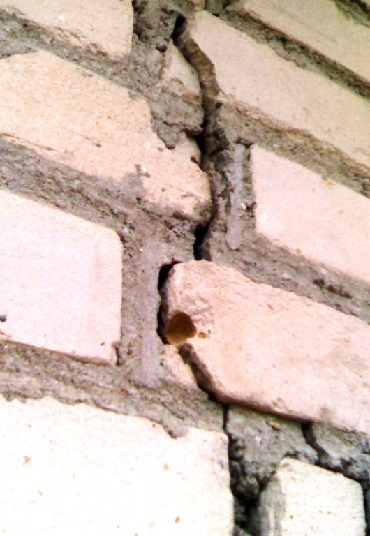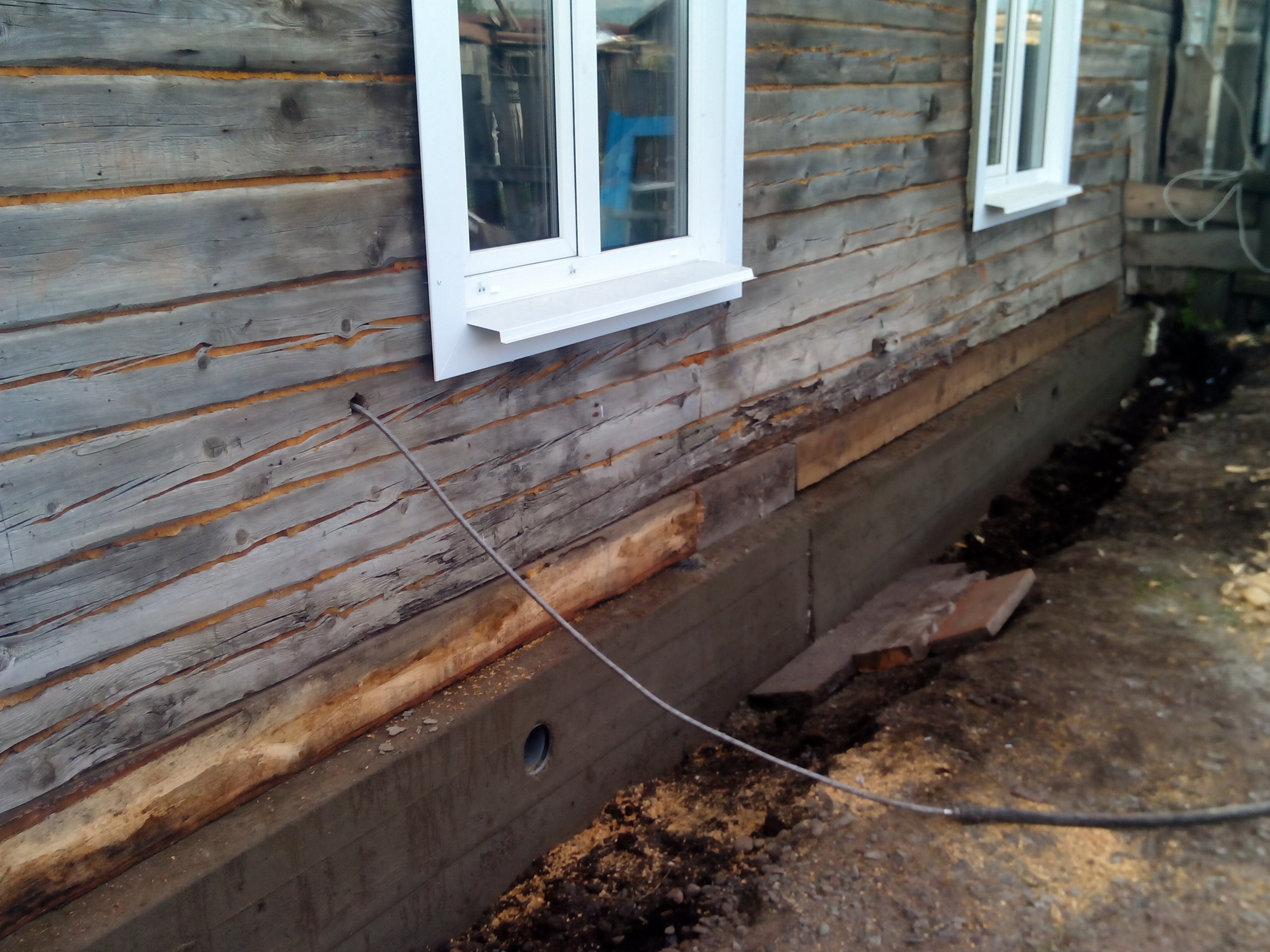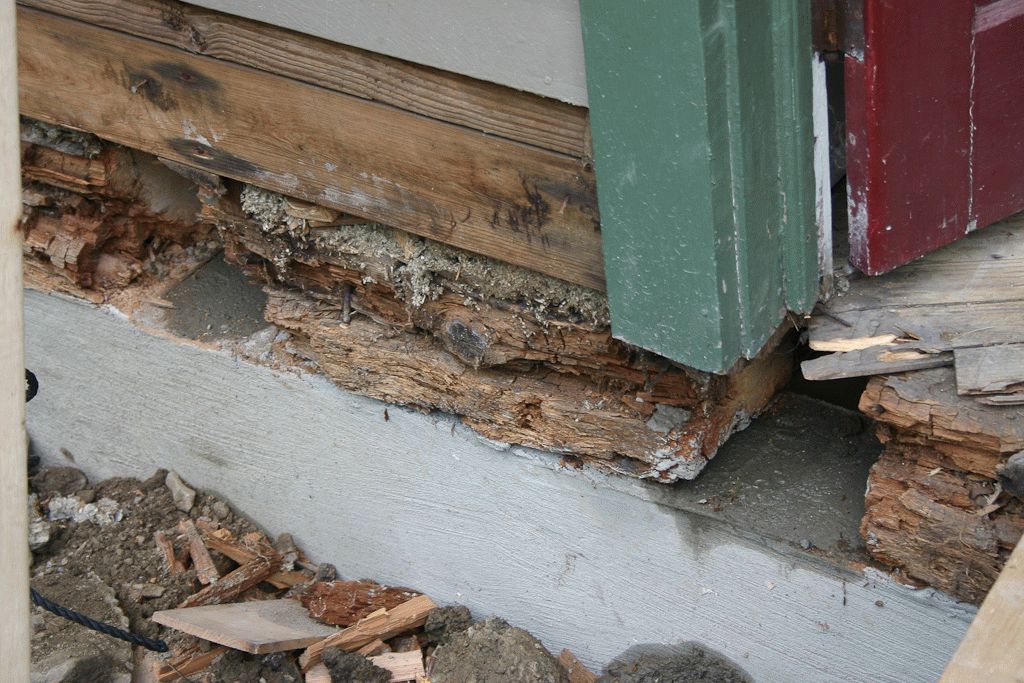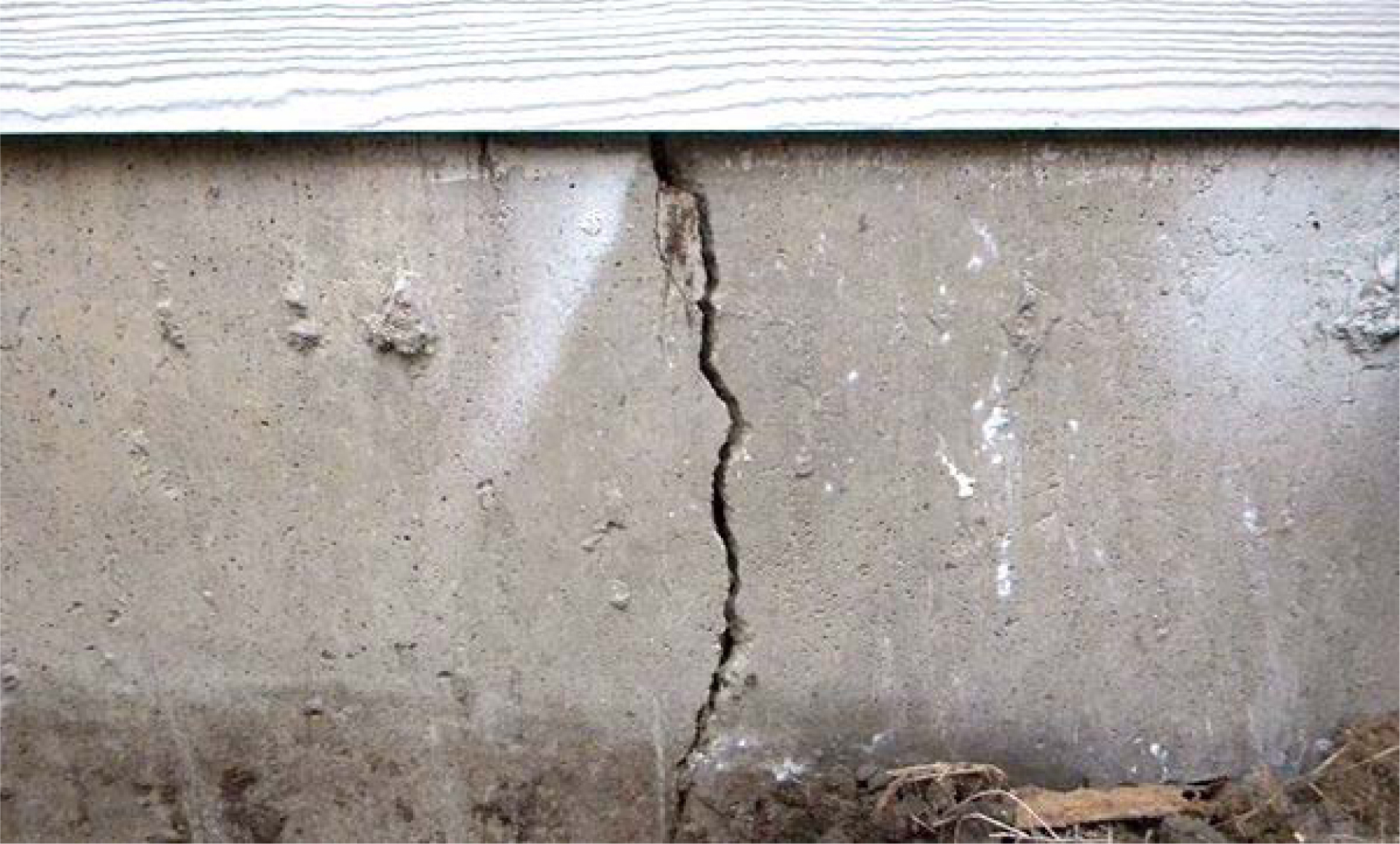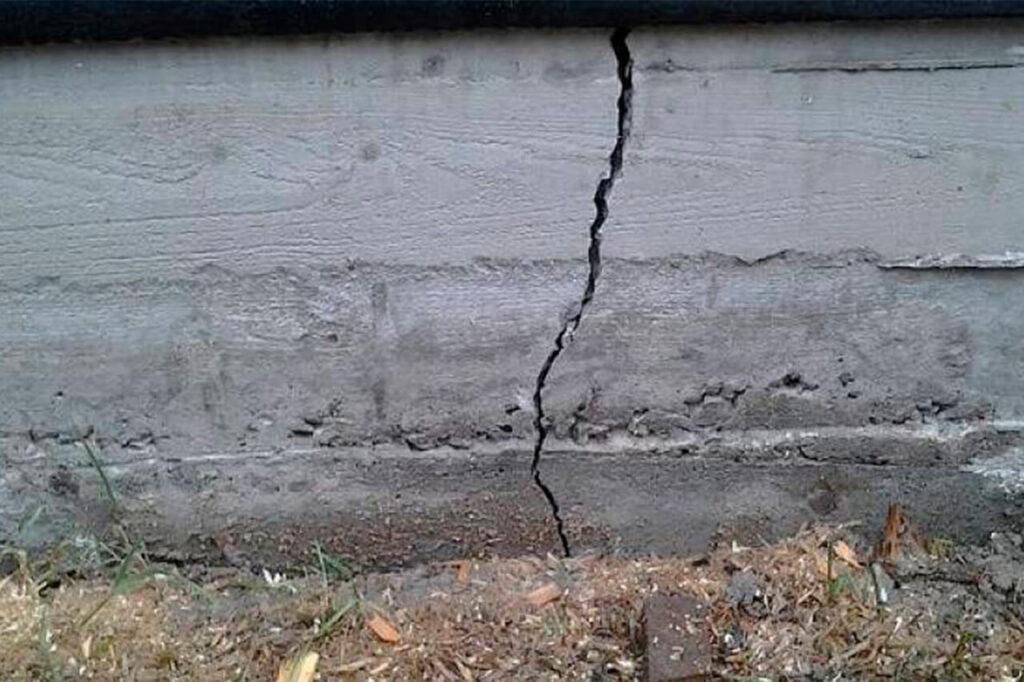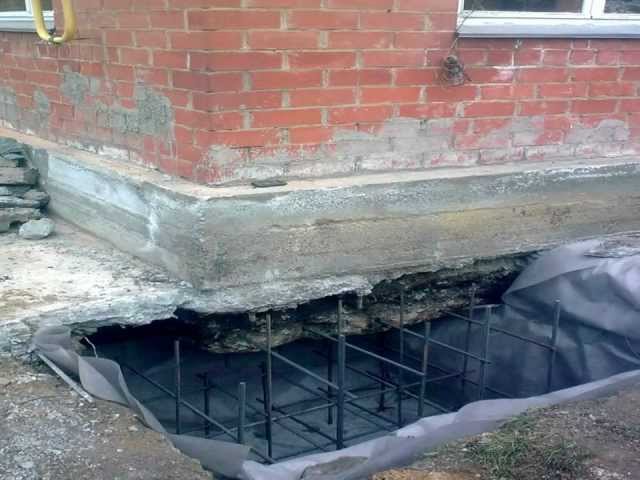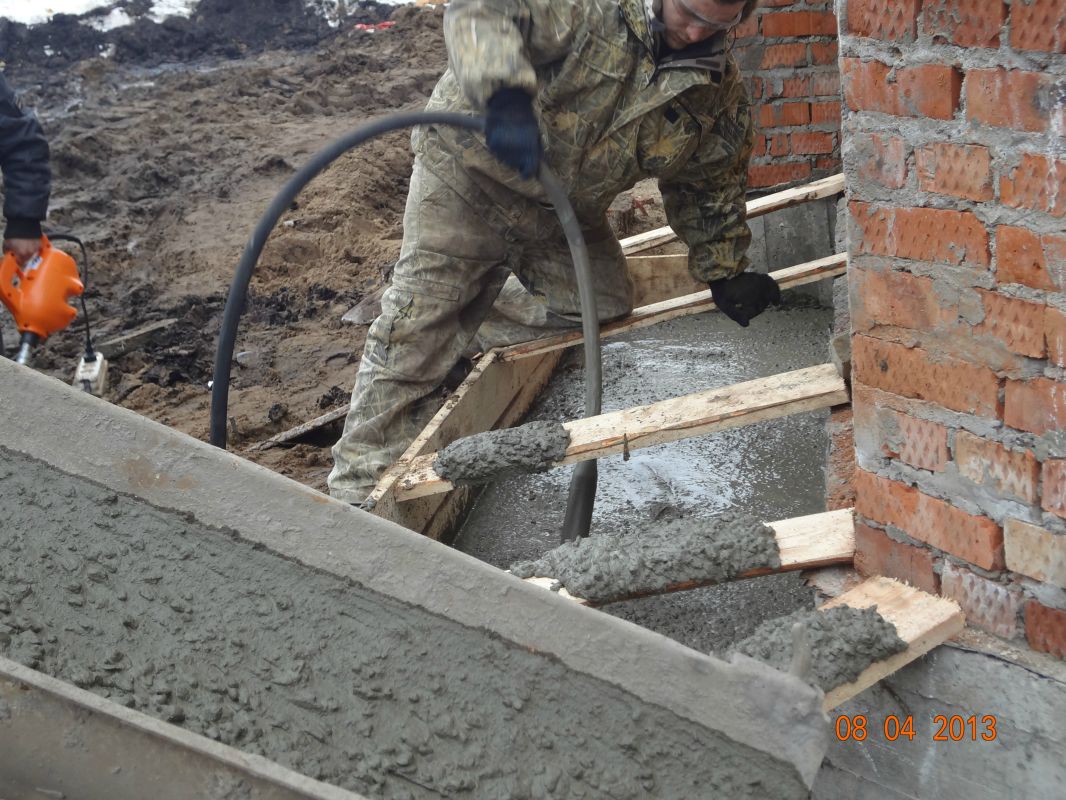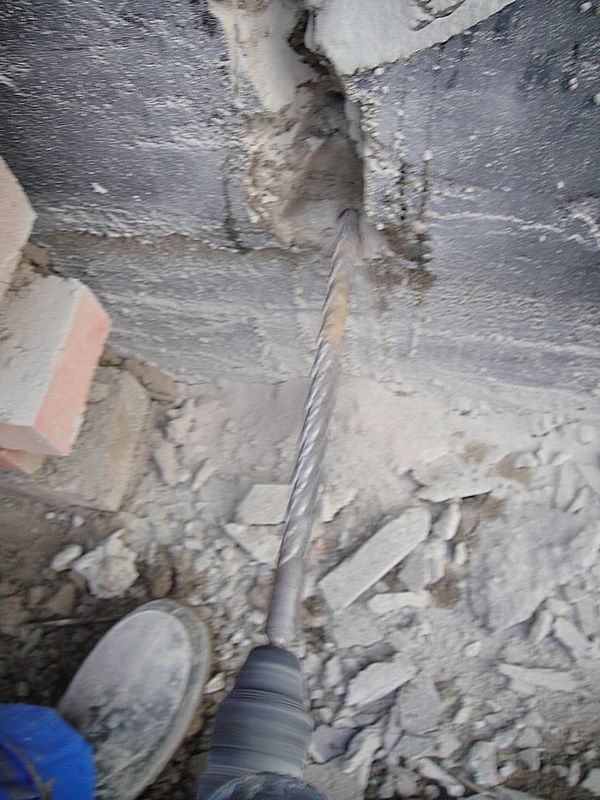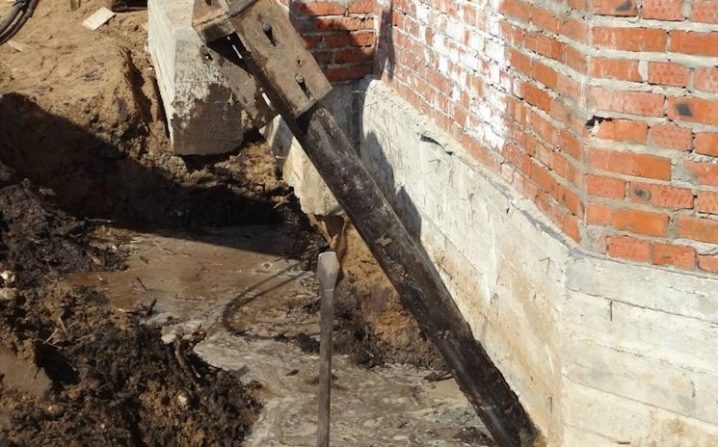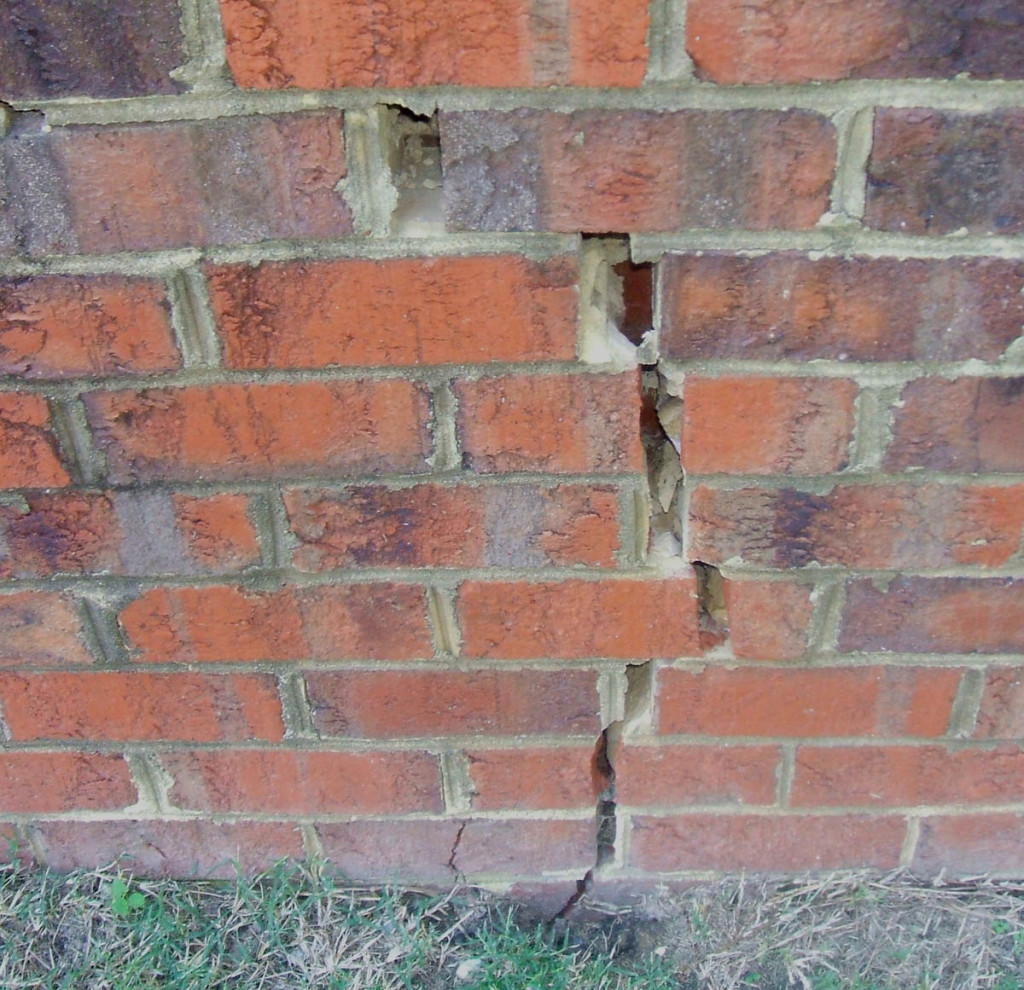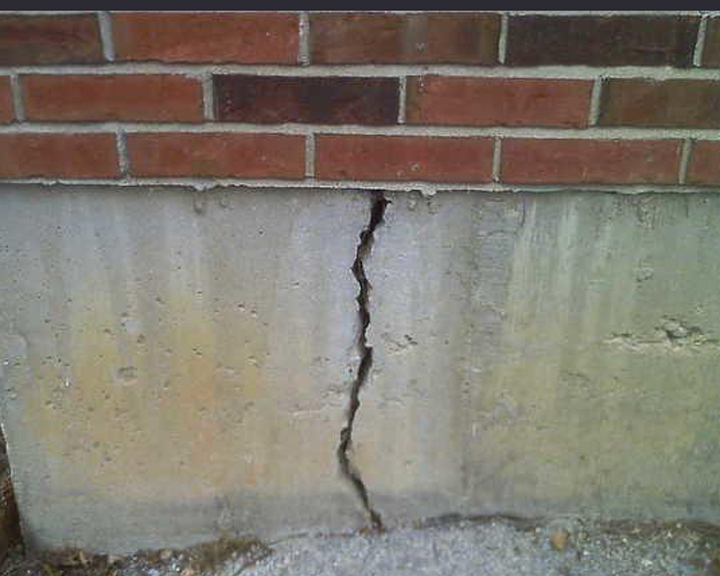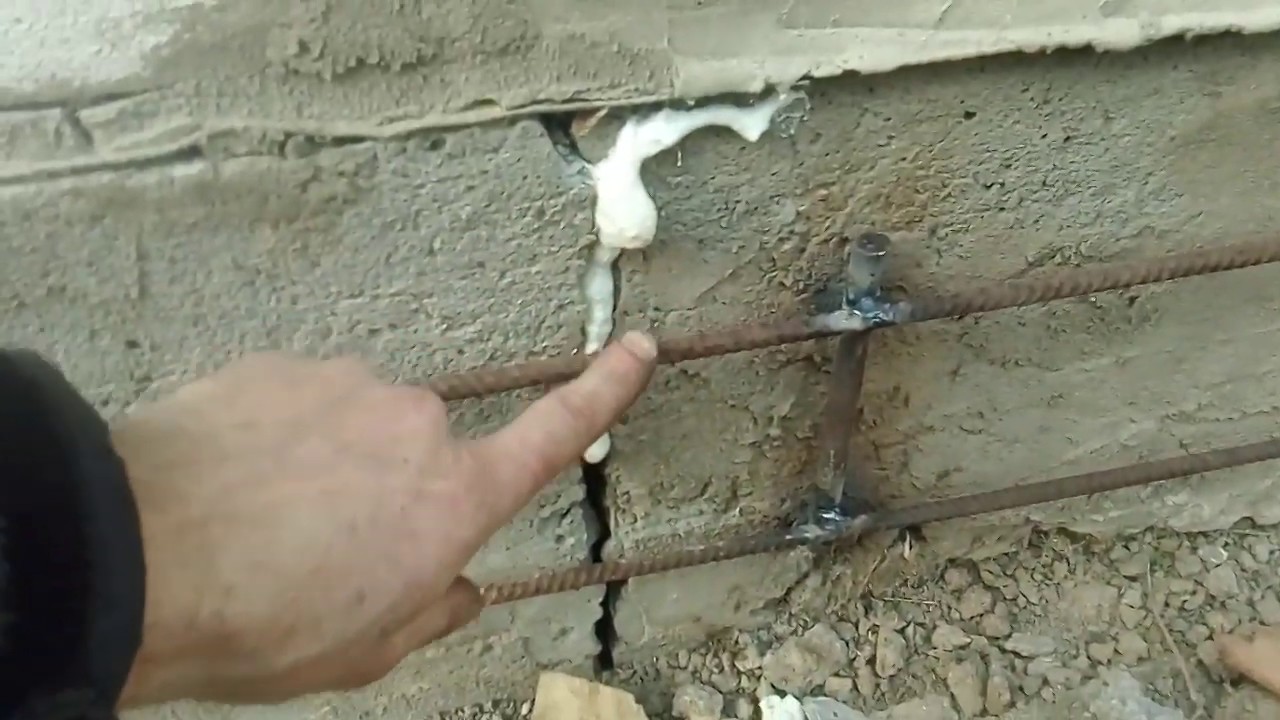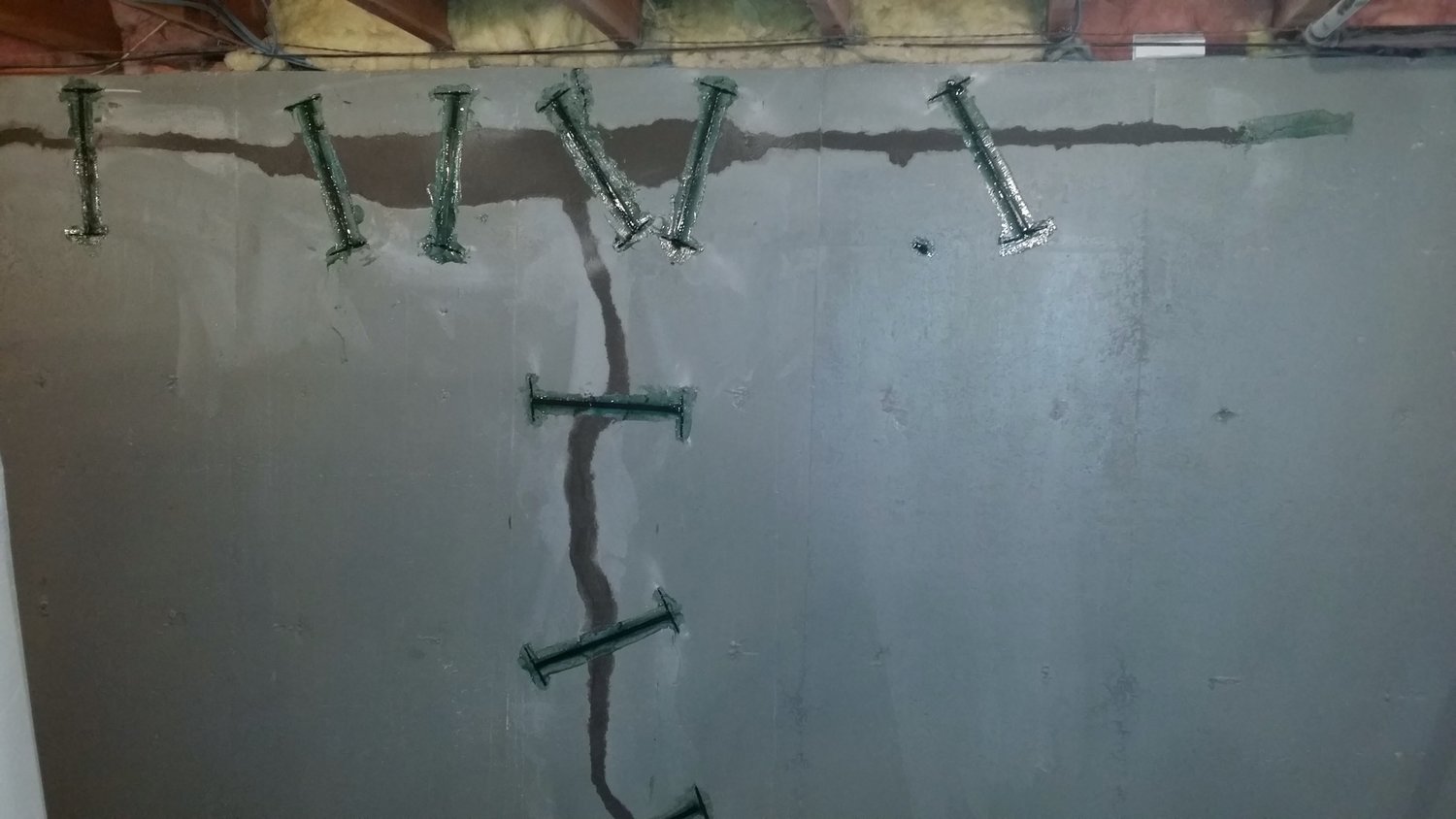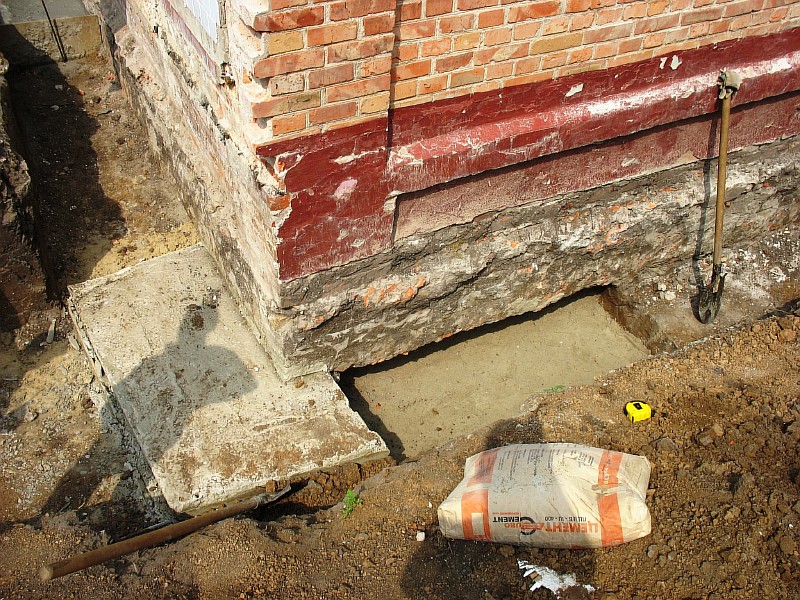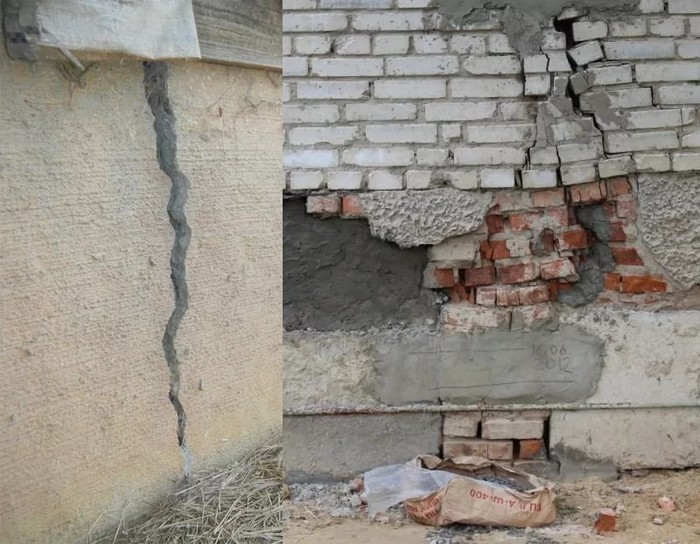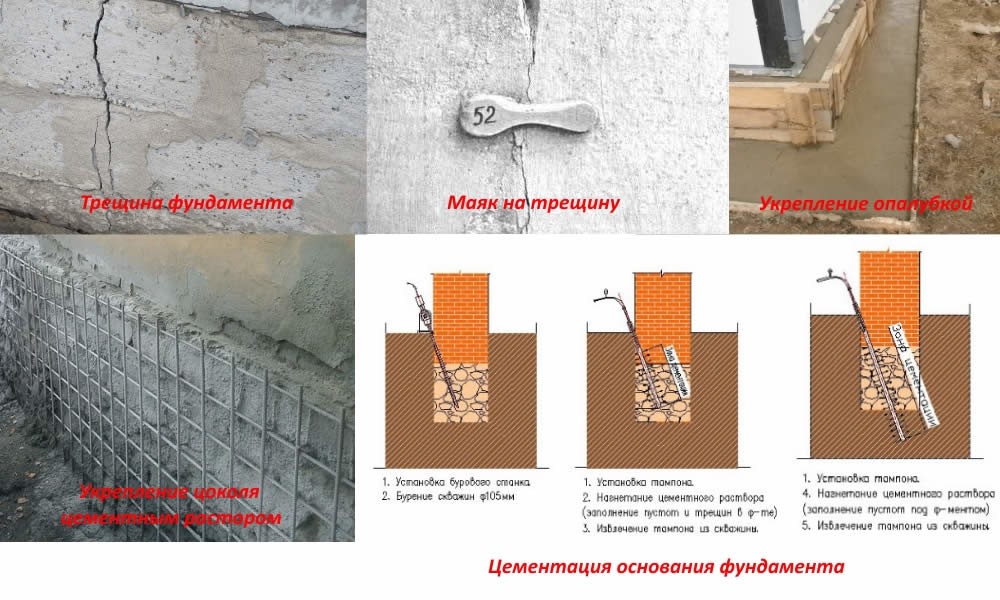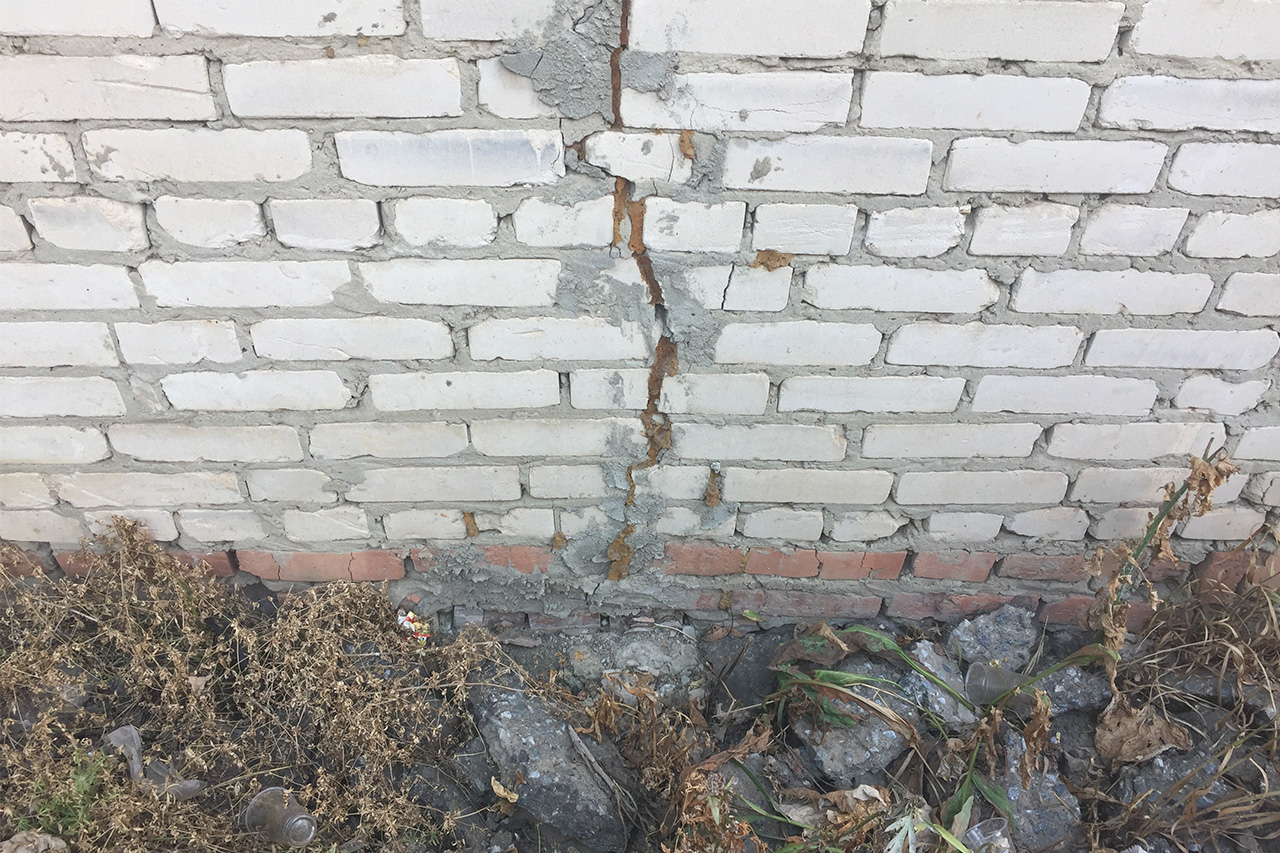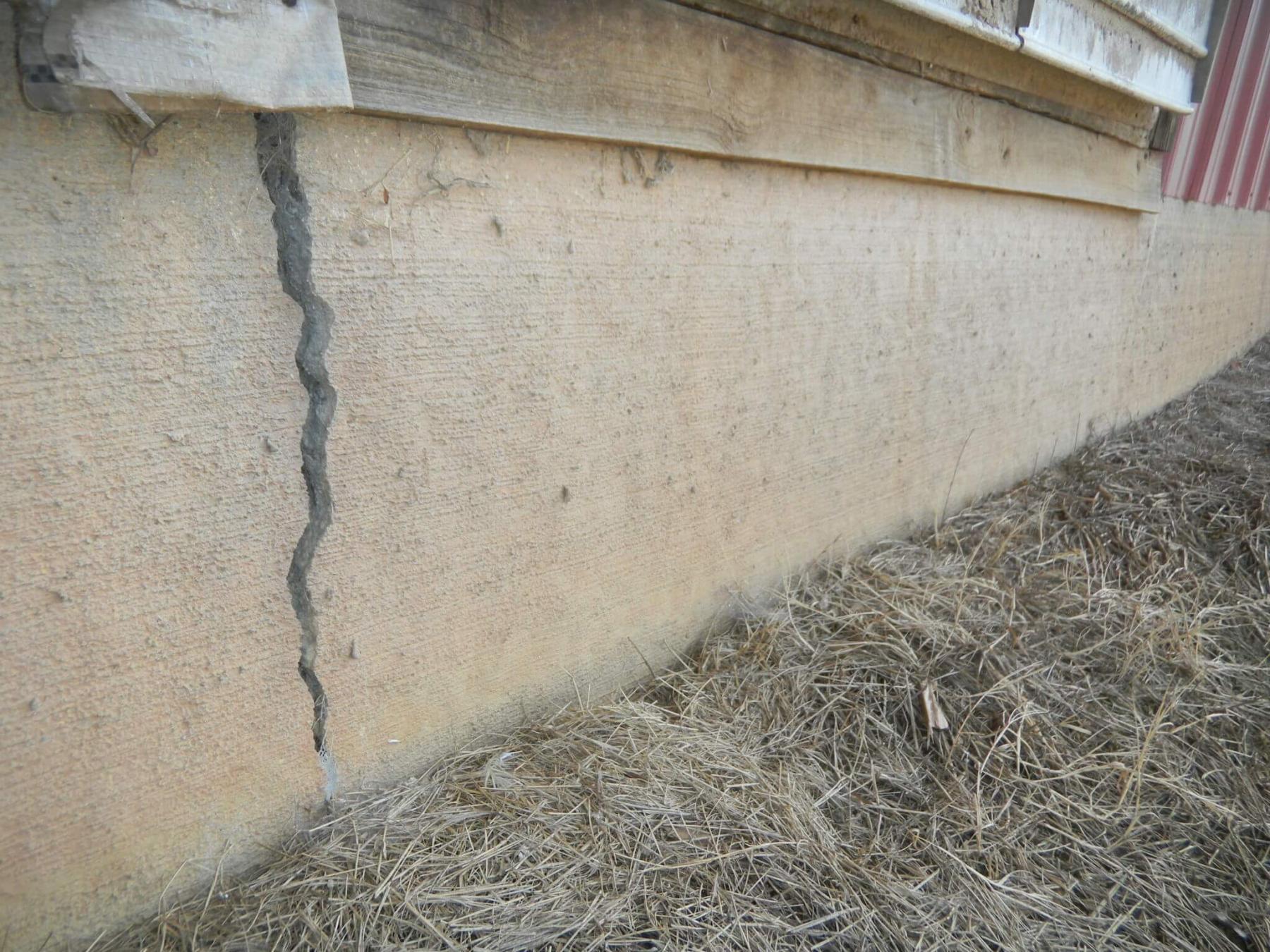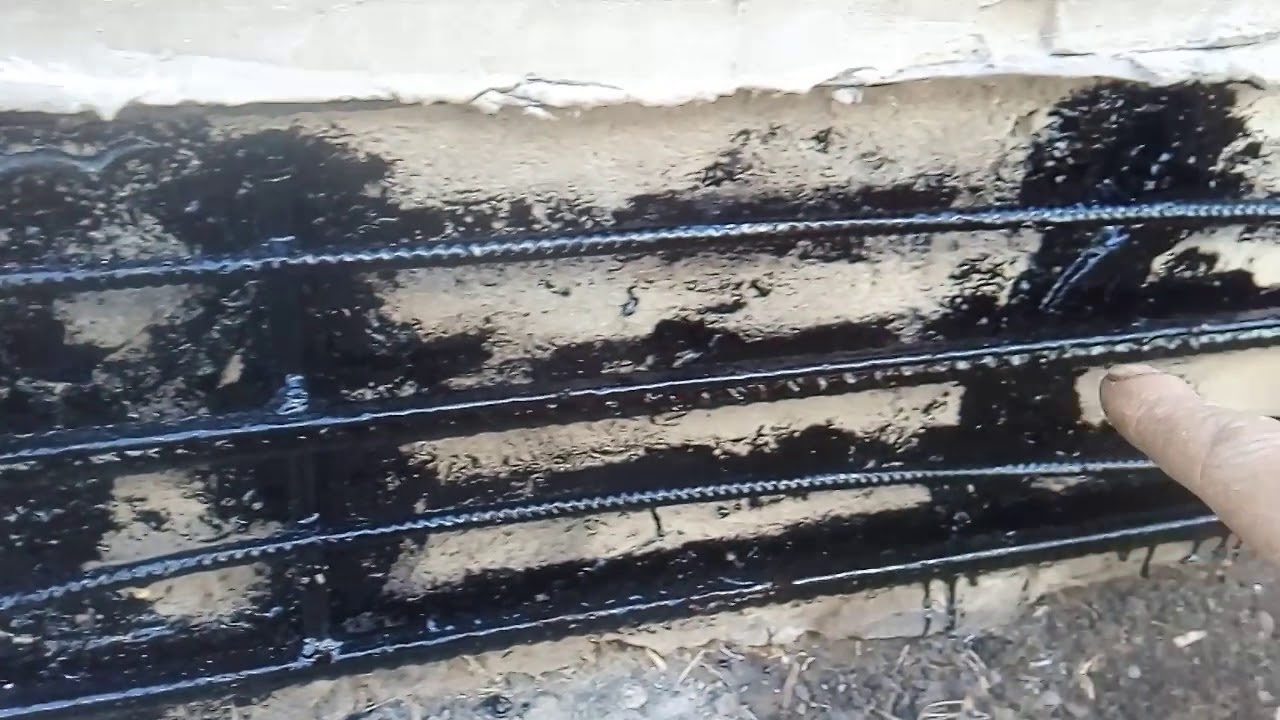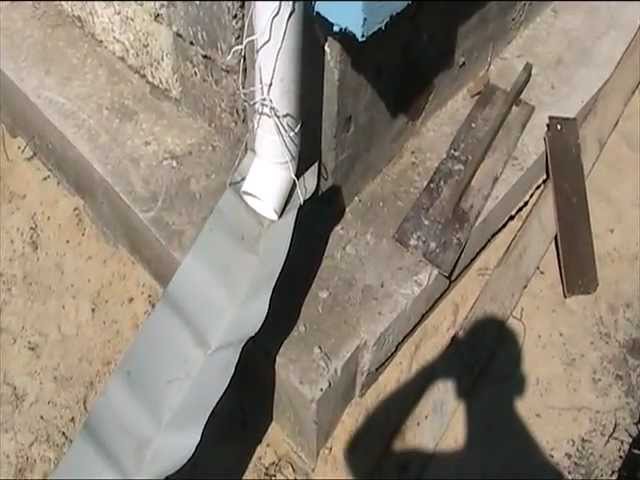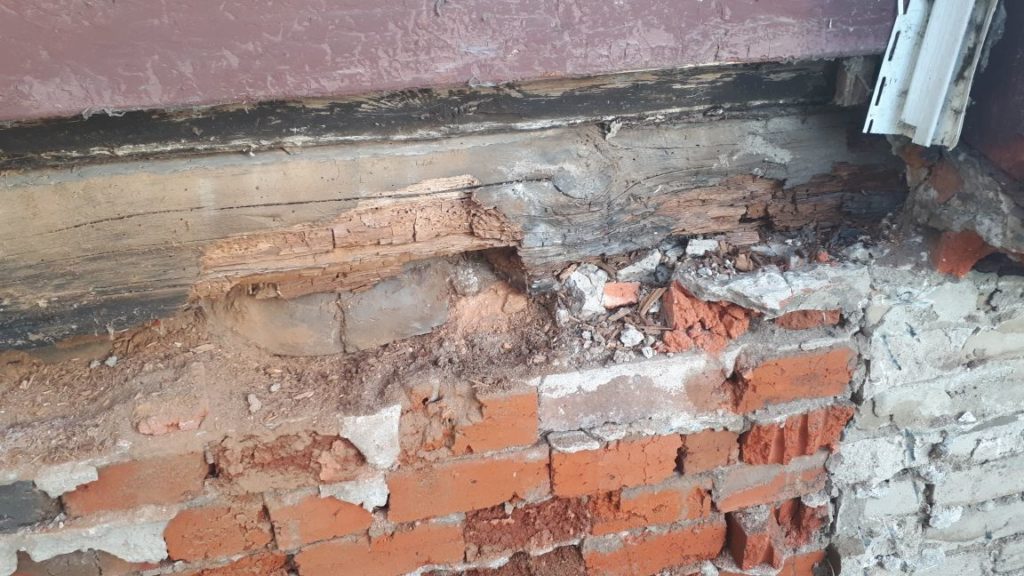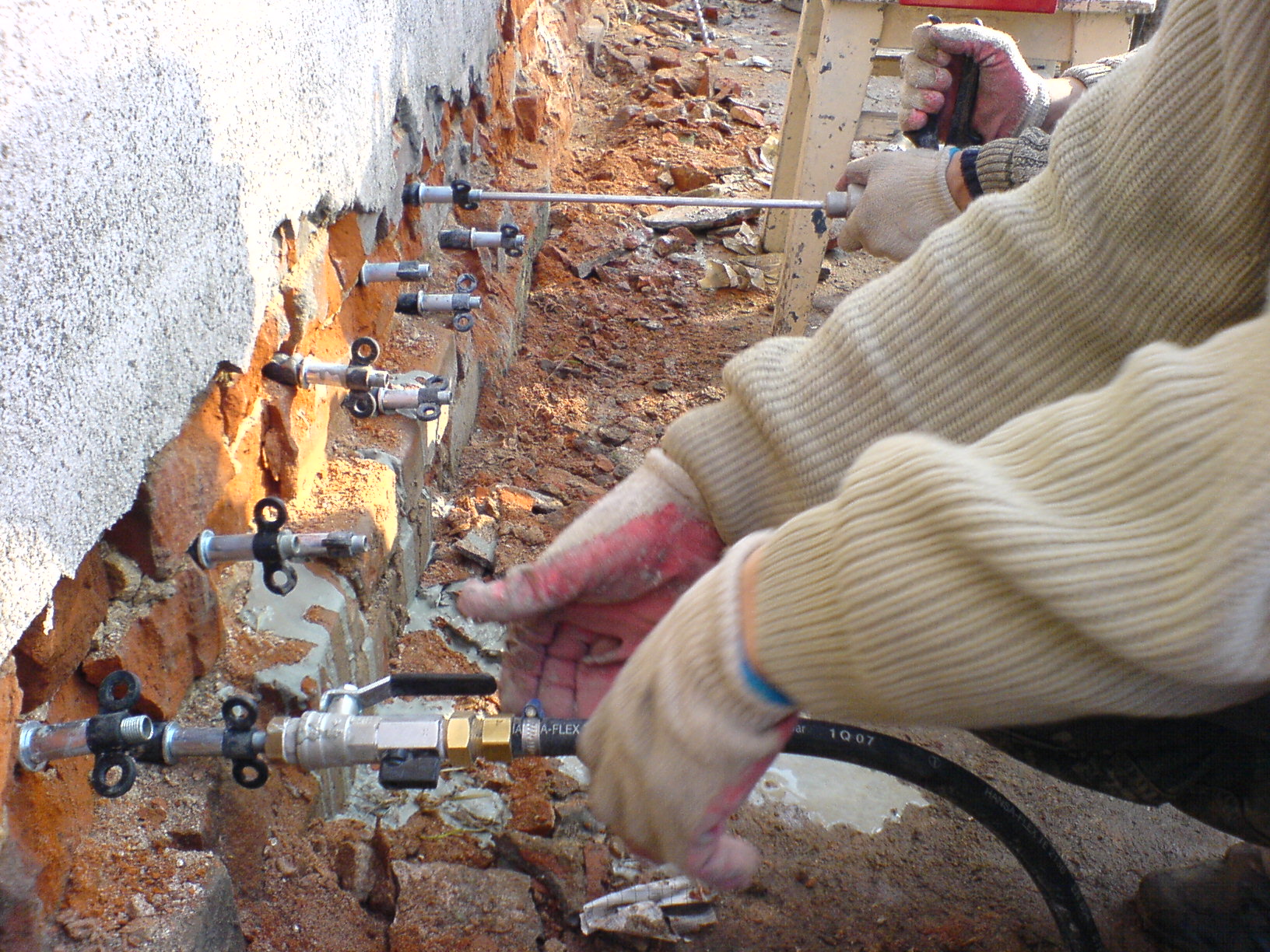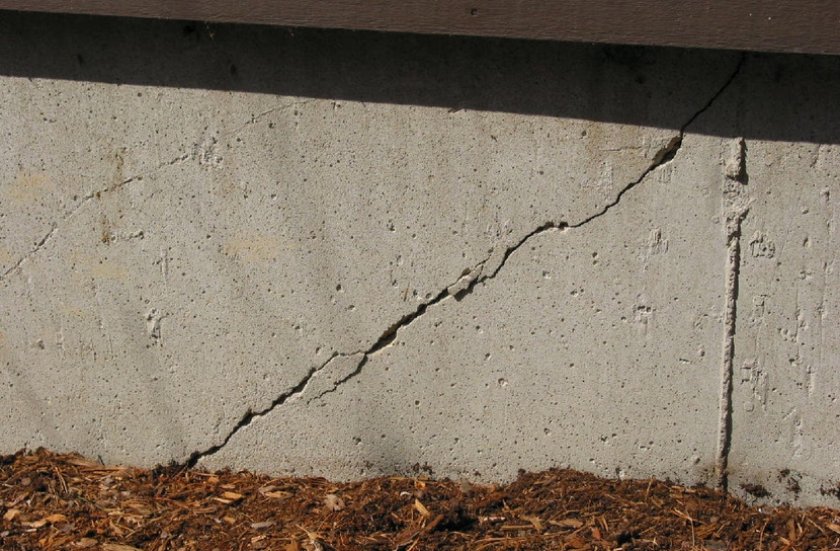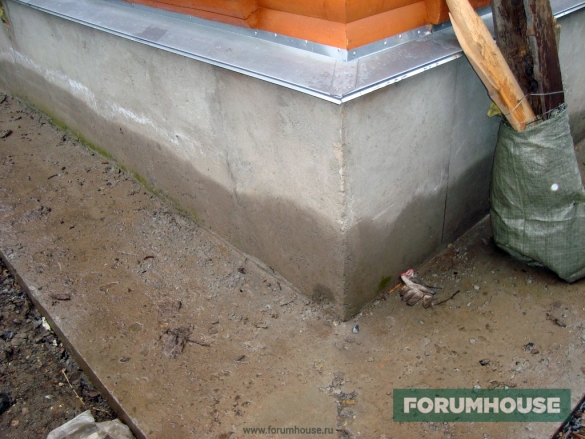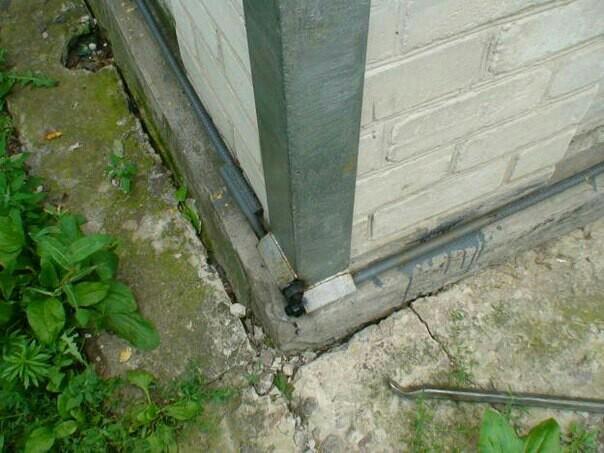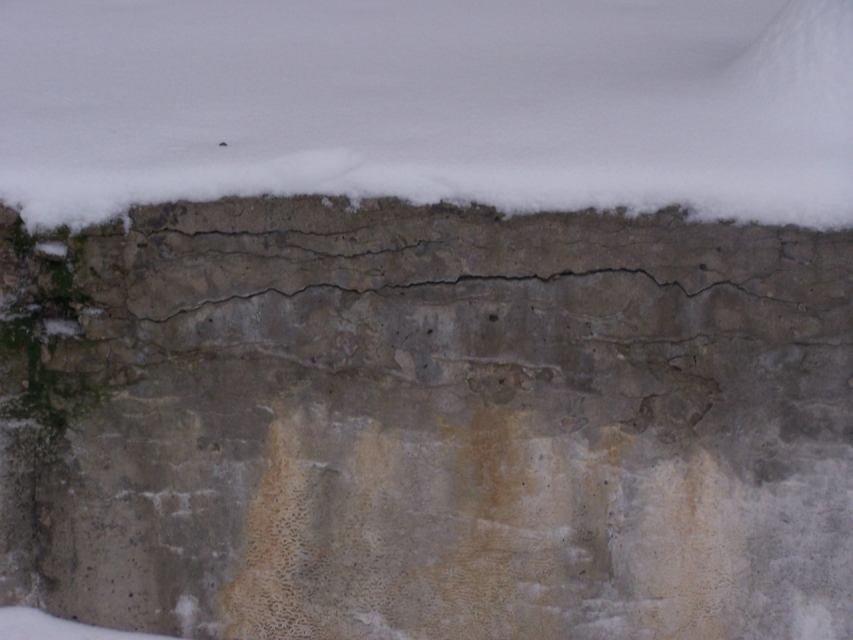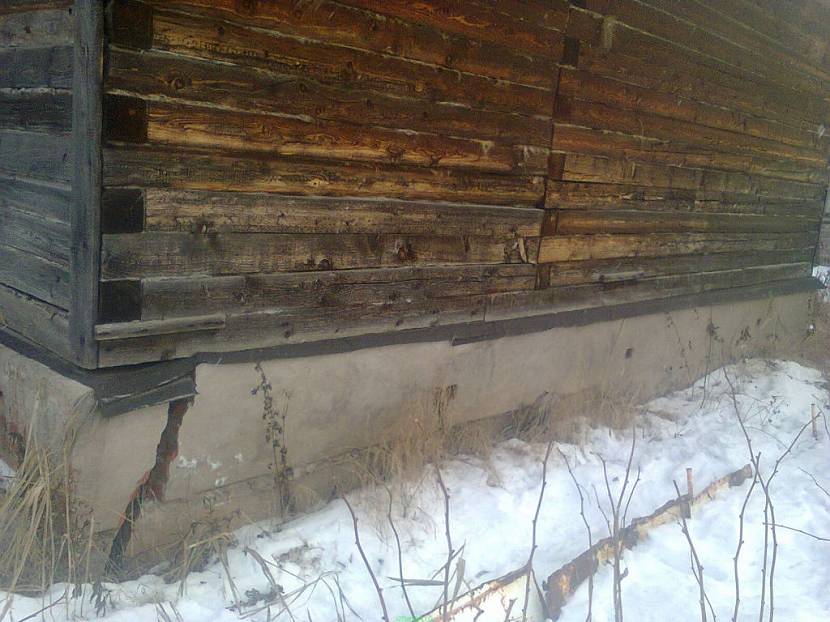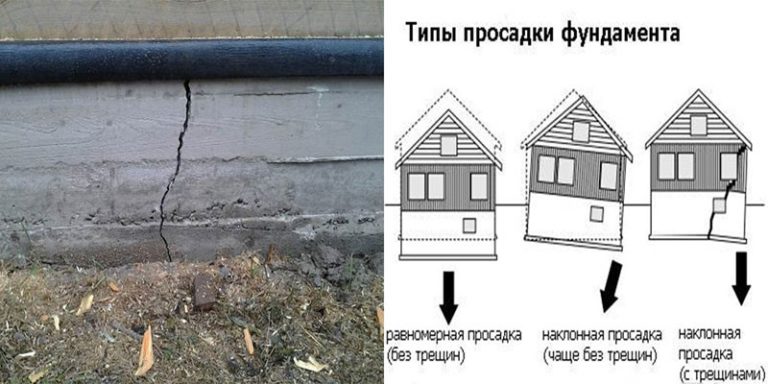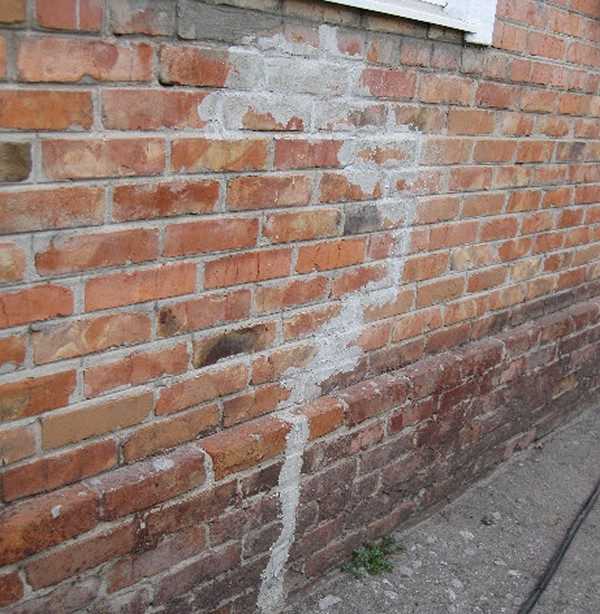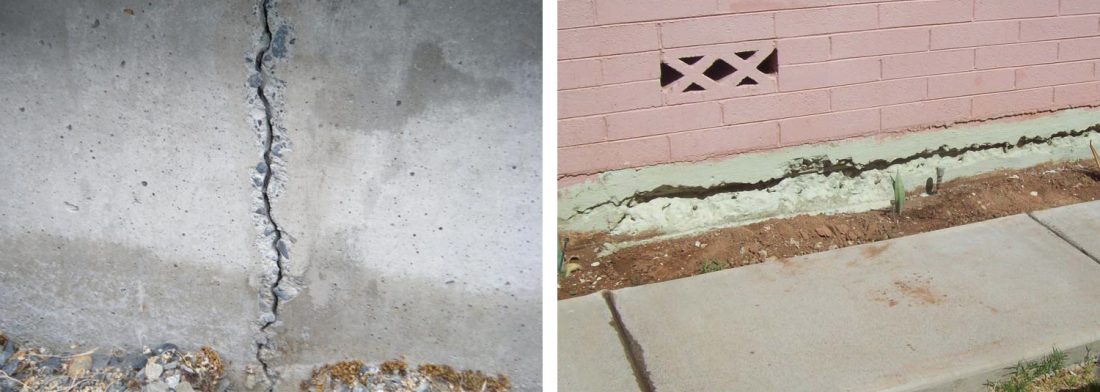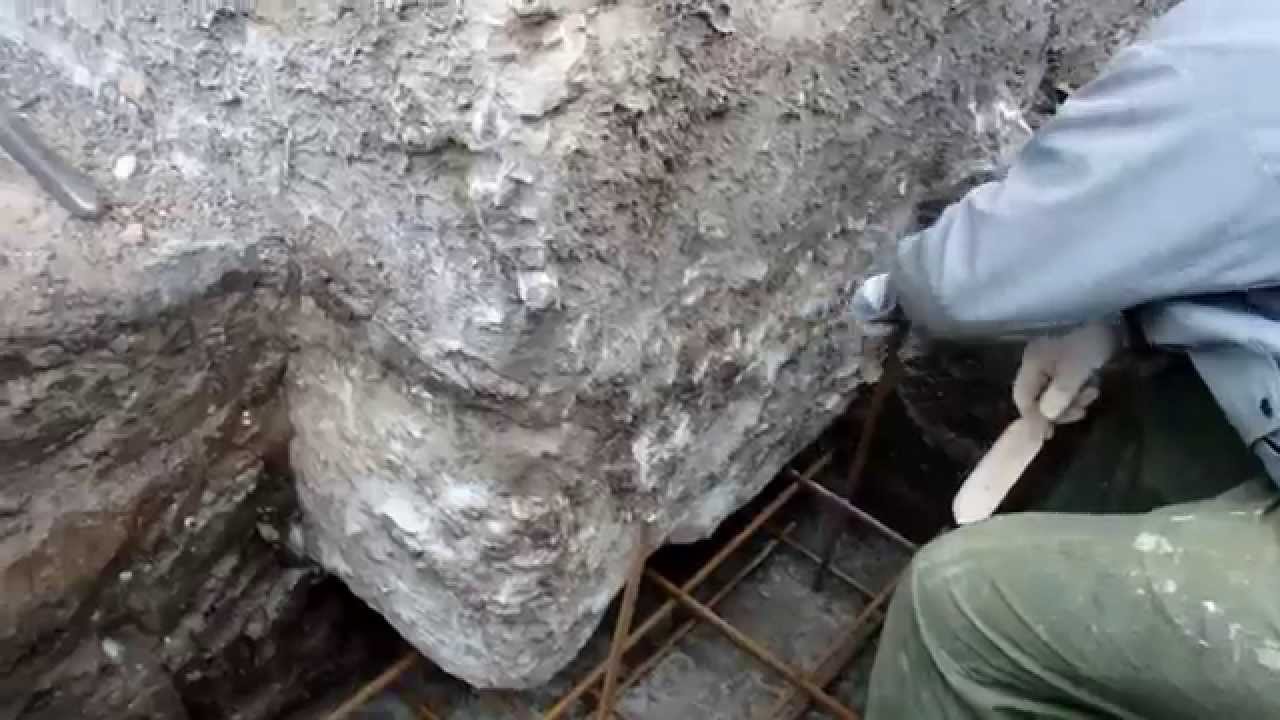Elimination of wall defects indoors
Often, small cracks in the masonry appear on the finish: wallpaper tears and falls behind, tiles swell. Repairing cracks in the wall of an apartment begins with removing the cladding and plaster. After cleaning to brickwork, cracks must be cut, filled with sealant. Then lay a strip of serpyanka mesh on top and putty. After drying, clean, plaster.
Cracks in plaster
During the repair, small cracks in the wall are sealed. If a vertical gap has formed, and it is far from the restoration work, the wall should be restored.
- Extend and clean the gap.
- Cover it and the wall next to it with a primer.
- Close up with plaster composition.
- Stick on a strip of serpyanka.
- Cover with putty.
Then everything is sanded and putty, depending on the finish.
Foam blocks, aerated concrete and other lightweight materials
Often a crack appears in the wall of foam blocks, how to close up a warm, soft material. All blocks made with air penetration are suitable as a good thermal insulator. The material is not designed for heavy loads. In the construction of residential buildings, foam blocks are used for the inner layer of masonry and they have little effect on the strength of the house structure.
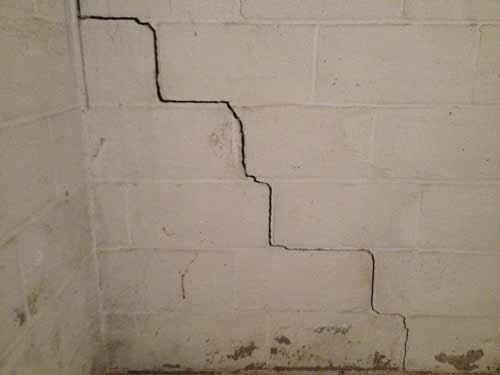
How to repair cracks in a foam block wall? Gypsum mortar with the addition of PVA glue as a plasticizer - up to 5% and reinforcing polyethylene or plastic fiber.
- Clean out the defect with a metal spatula or a construction knife.
- Cover with a primer.
- Fill with solution.
- Fasten a serpyanka or polypropylene mesh.
- Cover with a layer of putty.
After drying, clean and carry out the subsequent finishing of the wall by painting or sticking wallpaper.
Features of working with plaster
Gypsum blocks are used to create soundproof and lightweight partitions. If there is no foundation for the internal walls, then it can be laid on beams, choosing hollow slabs. How to repair cracks in plaster walls. The name itself suggests the material. The slots are sealed with a solution of gypsum with PVA or Bustilat. Small defects and gaps between boards can be filled with sealant or gypsum adhesive.
A beautiful corner instead of a ragged gap
Depending on the size of the defect in the corner, it is reinforced with metal corners or only with mesh. A large gap, especially if it increases, requires urgent repair.
- Clean up.
- Select at a distance of 20 - 25 cm platforms on both sides of the slot for fastening the corners.
- Drill holes, hammer in dowels and fix the metal corners on the sides on different walls.
- Fill a large gap with foam if the wall is made of brick or foam block. Concrete joint with cement and water.
- Lay the serpyanka or fiberglass.
- Plaster.
- For an even corner, sink a perforated metal corner - a profile - into the plaster.
- Putty, clean.
If the house is panel and defects have formed at the junction, you must inform the homeowner and require him to repair the exterior and seal the panel joints.
Drywall needs to be replaced
Plasterboards used to level walls swell with moisture and warp. When dry, tears of the outer coating are formed on them. A fine mesh of defects can be covered with a putty. But a sheet repaired in this way will not last long.
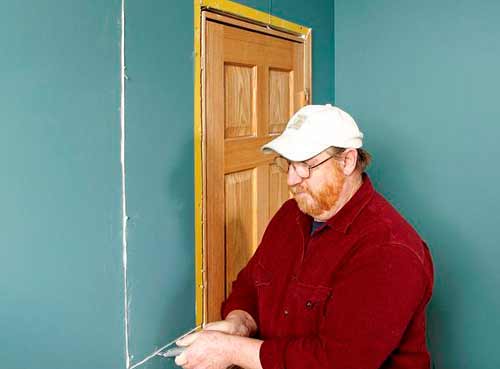
How to repair cracks in drywall walls? Small defects can be repaired with acrylic. The deformed partition is restored by replacing the expanded gypsum board. The sheet is trimmed neatly. If it is installed on a frame, the fasteners are removed. In its place, another plate is placed or glued to the wall. The joints between the sheets are closed.
If defects are formed due to the drying out of gypsum plaster, glass cloth can be glued as a reinforcing material.
Process features
The formation of gaps between the boards covering the floor is an inevitable process. The more often repairs and rearrangements of furniture take place in the house, the faster the wear of the wooden coating occurs. If you take good care of the floor, take care of it, ensure optimal temperature conditions in the apartment, try to distribute the load created by the weight of the furniture, then it will last a very long time. With careful use, the tree will dry out, but not much. Small gaps can be easily repaired by performing simple redecoration of the floor in various ways that are available to almost everyone. Covering up large spaces that have been formed for a long time will be very laborious due to the large amount of work.
There are several options for repairing wooden floors:
- cosmetic (does not require serious interventions on the floor surface, it is performed only on its surface in the area of spaces);
- partial (assumes local dismantling of boards);
- global dismantling (the coating is completely replaced).
Of course, no one wants to change the whole floor. But if we are talking about large gaps, damage to the battens on which the flooring is fixed, then complete dismantling is an ideal solution. With the help of auxiliary tools, old boards are removed, inspected for defects and those that are suitable for reuse are selected.
When all the floorboards have been repaired and replaced, each of them is carefully matched to each other so that there are no gaps or differences in height. If necessary, such defects are smoothed out with a plane.
What structures can be lifted
For major repairs, only one-story buildings of the following types are raised: from wooden beams; from rounded and other logs; panel board wooden houses. Structures made of timber or hardwood, for example, larch and oak, serve for quite a long time. Until now, there are houses of pre-revolutionary construction, and this is over 100 years old, which have retained their almost original appearance.
Modern wooden structures are not as strong. The reason for this is the quality of the timber, which became especially susceptible to various diseases after the beginning of the "atomic era" and the tests of nuclear bombs.
Elimination of defects
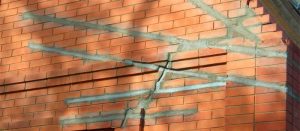 Reconstruction of a brick wall
Reconstruction of a brick wall
After strengthening the foundation, cosmetic repair of cracks in the brick walls is carried out. In order to make sure that new cracks are no longer expected, it is worth sticking pieces of paper in the places of damage and monitoring their integrity. If the piece of paper does not break, you can start restoring them.
Small, shallow cracks can be repaired with a cement mortar by first cleaning their edges and knocking unstable pieces of material and bonding mortar off them with a hammer. To make the adhesion with the new solution more durable, it is worth moistening the edges of the gap with water. The middle gaps should be sealed with a mixture of sand and cement (ratio 3: 1).
Sealing large cracks
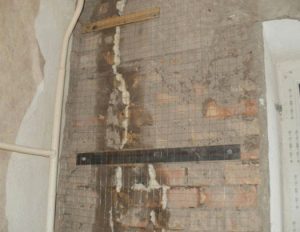 Reinforcement with plates
Reinforcement with plates
In order to eliminate large (more than 1-2 centimeters wide) connectors, you need to do much more operations, which are discussed in more detail below.
First, you need to completely disassemble the entire area with a crack, starting with the top rows. All unstable and crumbling bricks must be replaced with new ones. When laying new brickwork, they need to be additionally reinforced. If a rupture occurs in a brick wall assembly, reinforcement can be made using a strip of steel strip, bending its ends to the sides of the masonry and fixing it with bolts.
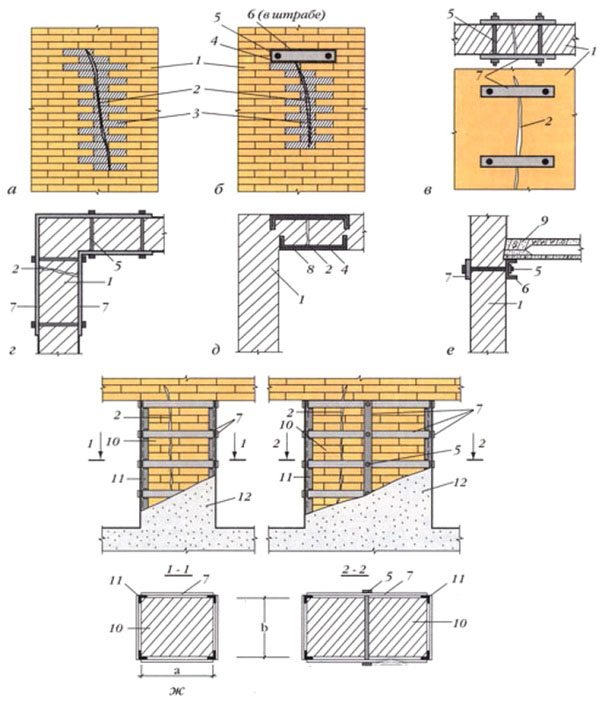 a - installation of a brick castle; b - brick castle with an anchor; reinforcement with plates with tension bolts (c - flat wall; d - wall corner); e - repair of a through crack with steel staples; e - repair in the place of support of the floor slab; g - strengthening of the cracked pier. 1- brick wall; 2- crack; 3 - brick castle; 4 - cement mortar; 5 - tie bolt; 6 - channel (anchor); 7 - steel plate; 8 - staples (installation step 50 cm); 9 - floor slab; 10 - brick wall; 11 - corner; 12 - finishing layer.
a - installation of a brick castle; b - brick castle with an anchor; reinforcement with plates with tension bolts (c - flat wall; d - wall corner); e - repair of a through crack with steel staples; e - repair in the place of support of the floor slab; g - strengthening of the cracked pier. 1- brick wall; 2- crack; 3 - brick castle; 4 - cement mortar; 5 - tie bolt; 6 - channel (anchor); 7 - steel plate; 8 - staples (installation step 50 cm); 9 - floor slab; 10 - brick wall; 11 - corner; 12 - finishing layer.
If the cracks that appear threaten the integrity of the building, it is necessary to perform a major reinforcement of the wall.Steel rods are installed along the perimeter of the house from the outside and inside. The result is a kind of powerful steel belt that encompasses the entire building.
 a, b - steel rods along the outer (a) and inner (b) sides of the wall; c - installation of non-tensioned tie-bars; 1 - steel rod; 2 - corner; 3 - steel base plate; 4 - channel.
a, b - steel rods along the outer (a) and inner (b) sides of the wall; c - installation of non-tensioned tie-bars; 1 - steel rod; 2 - corner; 3 - steel base plate; 4 - channel.
If the crack is too deep, you can also use the cement injection method: for this, inch holes are drilled along the entire length of the crack at a distance of 15-20 cm from each other. A tube filled with cement mortar is placed inside the hole, and by means of a sealant or a special construction syringe, the solution is injected into the crack, filling it with itself.
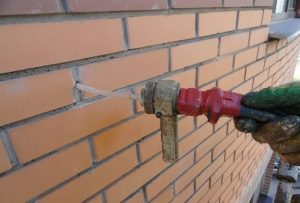 Injection method
Injection method
In addition, some builders use polyurethane foam to fill large cracks. To do this, it is blown into the depth of the crack, dries and is fixed on the outside with cement.
Sometimes cracks and breaks are so catastrophic that the wall cracks through and through. In such cases, it is also necessary to reinforce the wall from the inside. To do this, you need to deeply moisten the gap, fill the gap formed with cement and gravel and install metal linings fixed with anchors. After the solution has dried, you can start finishing the inside of the cracked wall.
So, repairing cracks in brick walls is an important and difficult task that requires large physical and material costs. Nevertheless, if such defects are not repaired in time, the house will soon simply be warped or deformed irrevocably.
Restore or change
Unfortunately, repairs are not always possible. If the window is completely unusable, then replacing it is the only solution to the problem.
In what cases will the window have to be dismantled and discarded:
- The frame literally crumbles. Most often this occurs in the lower part of the window, where condensation accumulates;
- The geometry of the window is badly broken. If it cannot be fixed without dismantling the box, then it is better to replace the frames;
- The window is too fragile. Thin bindings between glasses may not withstand mechanical stress. Considering that it will be necessary to peel off layers of paint from the frame, which means that force is applied, then you should not waste time on restoration, but immediately dispose of the window.
You can replace the window not only with the popular plastic, but also with a wooden one. Such products cost a little more and practically do not differ functionally from PVC windows, as they are equipped with modern fittings and double-glazed windows.
What can be repaired:
- The appearance of the frames;
- Broken glass;
- Slots;
- Small distortions;
- Local rotten areas;
- Sagging sashes.
To carry out the repair, you will need a set of tools and materials: chisels, a plane, a spatula, a drill, a level, a sealant, a sealant, drying oil, putty and paintwork.
The restoration is best done during the summer, in warm and dry weather. You need to start with inspection and identification of defects. In order not to miss anything, the frames can be removed from the box, check the integrity and reliability of the connections, as well as compliance with the level of the sides of the box.
Prevention of heat loss
Correct installation of window structures, periodic renewal of the sealing gum and the use of additional protective measures help to reduce heat losses. If possible, you should install energy-saving double-glazed windows, on which there is a thin layer of low-emission spraying.
Windowsill
An incorrectly installed window sill leads to cracks
When performing installation work, it is important to make sure that the window sill is securely fixed in a strictly horizontal position.
Slopes
In most situations, blowing is observed on the slopes of window structures. If the position of the slopes is violated, you need to adjust them to close the resulting gaps.

The causes of cracks
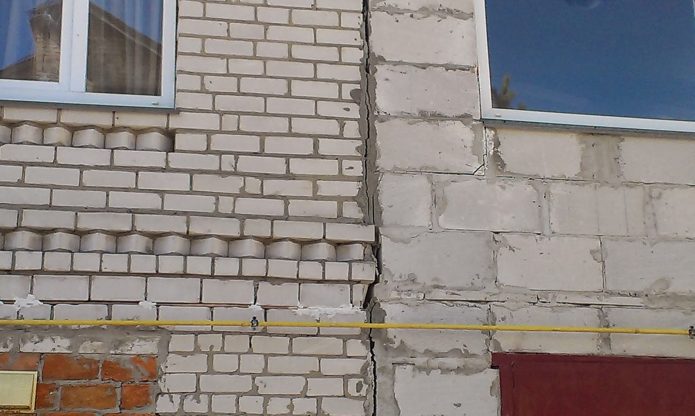 The most common reason for this trouble is the sinking of the foundation.
The most common reason for this trouble is the sinking of the foundation.
The first step in detecting a flaw should be a thorough examination and identification of the reasons that led to the appearance of a crack, because with the observance of construction technology and proper design, houses stand for many years and do not collapse.
Most likely, the foundation of the extension sags or "floats" away from the main building and pulls the entire structure with it. This happens under the influence of several factors:
- incorrect calculation of soil resistance, freezing point;
- the wrong choice of the type and structure of the foundation;
- insufficient depth, thickness of the foundation;
- high groundwater level, seasonal increase in its level;
- unstable heaving clay soil;
- irregularities in the formation of a sand and gravel cushion under the foundation, poor-quality compaction;
- construction of a cellar or basement under the already finished main building.
It turns out that the soil under the main structure has already compacted, the main natural shrinkage has passed, and at the new extension, especially on the side far from the house, the soil has not yet been compacted and is actively sagging - as a result, a crack appears.
To assess the degree of danger of the gap and the rate of its increase, special control beacons are used. At home, you can use two methods to measure the rate of crack growth:
- stick a paper strip across the crack with the date of installation;
- make a plaster strip from the solution and stick it across the gap.
It is necessary to check the status of such a beacon regularly. If the breaks are frequent and the damage increases, then complex technical solutions and professional advice will be required to fix the problem. If there were no breaks during the check, then the degree of danger is low, but it is necessary to close the crack. First, it is imperative to eliminate the cause of the flaw, otherwise the destruction will continue, and all repair work will go down the drain.
What building materials are suitable for repairing damage
Crack bridging materials can be found in any supermarket today and are designed to work on a variety of surfaces. Both universal mixes and special ones for external or internal work are sold.
Several of the most commonly used types of putties from different manufacturers:
-
Neomid Professional - for the elimination of both outdoor and indoor damage. This putty putty is distinguished by its versatility, it is suitable for various materials. The content in the composition of the reinforcing fibers allows you to work with deep and wide cracks.
-
Semin Fibrelastic is a versatile filler with increased elasticity, can be used both indoors and outdoors. Withstands significant loads during the expansion and contraction of "breathing" cracks, does not lose its qualities with changes in temperature and humidity.
-
Profix is easy to apply and has plasticity and high adhesion to most materials from which the walls are erected. The assembly-putty mixture works great on the street and is suitable for self-repair of small cracks, has the possibility of textured application.
-
Unis High-build glare - plaster putty, manufacturers give a 15-year guarantee for Unis seams. It is used to correct internal defects.
You can prepare a mixture for sealing cracks yourself.
Cement-sand mortar is made at the rate of 3 parts of sand for 1 part of cement, for large or through wall ruptures, crushed stone can be added, and for plasticity add liquid soap in the amount of 30 g per 15 liters of concrete or silicate glue (1 liter per 15 liters of solution) , or PVA (100 g per 15 l of the mixture). It is possible to improve the properties of the finished putty by mixing fiber reinforcing fibers and ready-made plasticizers.
It is used for external cracks in masonry, concrete, aerated concrete.The advantage of this material can be considered its strength, and the disadvantage is its low elasticity, even in the presence of plasticizing additives, moreover, the finished solution cannot be stored for a long time.
The silicone sealant does not need to be made by yourself, it is sold ready-made in special tubes and is applied using a glue gun with a fine tip, which is convenient for filling gaps. The advantages of silicone are fast drying and high elasticity of the seam, moisture resistance. Among the shortcomings, one can single out the fragility and softness of the material. Silicone is used inside the house to repair small cracks.
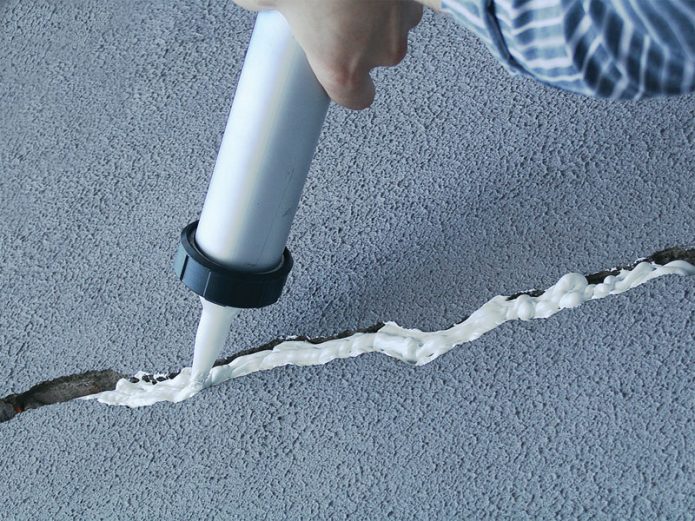 —
—
Polyurethane foam is used to fill internal voids in cracked structures made of aerated concrete or aerated concrete, its advantage is its lightness and excellent thermal insulation. The minus of the polyurethane foam is in its softness and insufficient strength, an additional coating of plaster is needed on top.
Causes of occurrence
Diagram of the causes of cracks in concrete.
Of course, a crack cannot arise just like that from scratch; there is a reason for its formation, which will need to be clarified first of all before eliminating it. After all, patching up the crack, as we found out earlier, is not so difficult. But if the cause is not eliminated, it will appear again and again. Before you build a wall of foam blocks, you need to know the reasons why the shortcomings of this material may come to light.
A crack may appear due to displacement of the soil or foundation, with temperature changes, due to high humidity or improper mixing technology. It turns out that it is possible to erect walls from foam blocks only on a reliable foundation, without fail using reinforcement in the walls, and so on. That is, construction using this material must be carried out in strict observance of all the rules of the technology for performing construction and masonry.
Of course, if the wall is ready and it has cracked, it is no longer possible to disassemble it. Therefore, you have to resort to various methods of embedding. Above has already been considered one way to seal a crack in the wall. Obviously, this is not the only way that you can use it, there are other options. Here, for example, is another option for how you can repair a crack in a wall made of aerated concrete:
- The plane on which the crack has formed must be cleaned of the destroyed layer of building material.
- After cleaning, dust is washed with water, you can also use a dry dedusting method using a hairdryer or vacuum cleaner.
- When the wall is clean and free of dust, a primer is applied to the surface.
- Now you can start sealing, choosing the right material depending on the size. You can fill up a small crack using absolutely any solution. Large cracks must be repaired using an adhesive. A large one is closed up with a mixture of glue or cement with the addition of crushed stone. For the convenience of work, you need to use a spatula and grout.
- The selected solution is used to fill a seam or crack and stabilize for a while with a sheet of plywood, which can be fixed using self-tapping screws.
- When not cracks have appeared, but a large hole has formed, concrete reinforcement with nails or an iron mesh will be required. In this case, aerated concrete must be cleaned, the resulting hole must be metallized with nails, and a metal mesh must be put on them. And only after that, the cavity is filled with a solution of glue and pieces of aerated concrete.
In the case of the chosen method of restoration and repair, the following materials and tools will be needed:
- Water (or aqueous solution);
- Vacuum cleaner (or hair dryer);
- Glue;
- Cement;
- Crushed stone;
- Grout;
- Putty knife;
- Plywood sheets;
- Self-tapping screws;
- Nails;
- Iron mesh.
All these materials must be prepared in advance, even before carrying out repair work.
From all of the above, we can conclude that cracks arise due to non-compliance with the technology of laying the wall, with the wrong type of foundation, with incorrect consideration of the ratio of the advantages and disadvantages of this material.
If a person is not confident in his abilities, then it is better to entrust the execution of this work to masters or specialists who can both perform the work and independently eliminate the shortcomings obtained in the course of the work.
External wall repair
Horizontal cracks in the walls are less dangerous for the destruction of the house. The reason for their formation is related to the construction of the house:
- different depths of the foundation of the outer walls and under the partitions;
- lack of a bond between the inner and outer walls;
- poor quality masonry;
- closely located groundwater undermines the foundation;
- wind movement of the roof.
Usually, a thin tortuous crack, several mm wide, runs along the perimeter. It is cut, cleaned of dust and primed. After that, it is filled with a sealant.
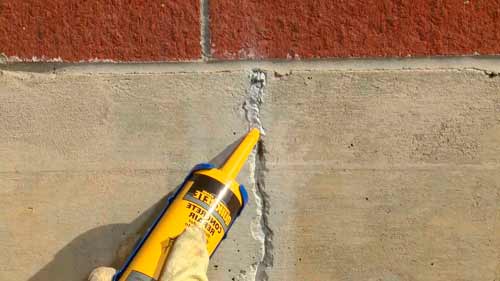
An armored belt is made around the perimeter of a metal strip and anchors. After that, the crack in the wall should be repaired from the inside in the same way.

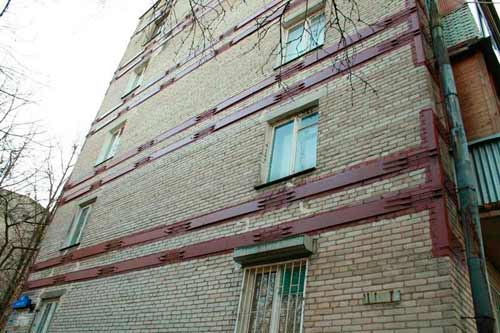
Facade plaster restoration
Timely filling of cracks in the plaster of external walls significantly prolongs the operational period of the building. If the finishing technology is violated and the proportions of the components of the plaster are not observed, the facade resembles dry soil. How to remove cracks on the outside of the wall plaster. It is impossible to cut them all, it is easier to completely remove the plaster.
- Clean the wall with a metal brush from all loose particles.
- Cover with deep penetration primer. Use a coarse brush and rub the primer in different directions.
- Secure the polypropylene or fiberglass mesh.
- Apply a thin layer of plaster. If it is necessary to level out large differences, plaster in 2 - 3 layers, cleaning and covering with a primer.
- Cover the walls with water-based paint or make another facade finish.
By themselves, small cracks in the plaster are not dangerous. But they get rainwater, which destroys the wall covering. In winter, it freezes, penetrating deeper and deeper into the plaster and then the masonry. That is why it is necessary to close the crack in the plaster on the wall.
Strengthening brickwork
Small cracks in the brickwork, formed instead of the spilled mortar, are sealed to prevent water ingress and further destruction. They must be cleaned with a metal brush, blown out the dirt and sealed with sealant or polyurethane foam using a thin nozzle on the gun.
To close a crack in the wall of a brick house with a width of more than 1 cm, especially if it continues to expand, it is necessary with the help of screeds.
- The wall is grooved perpendicular to the crack or along the horizontal joints between the bricks. Holes are drilled along the edges of the recess.
- The reinforced metal bar is welded with the letter "P", the crossbar is equal to the length of the selected indentations. The side pins are inserted into the hole.
- A cross member is welded on the inside. The excess is cut off.
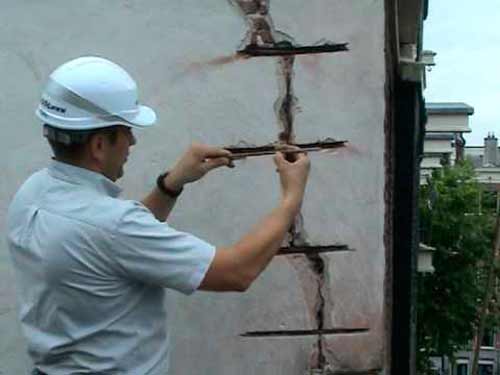
Such end-to-end staples are placed at a distance of 20 cm from each other along the entire length of the crack.
Local cracks in the wall that do not expand are best removed by re-laying bricks. Disassemble all broken bricks from top to bottom. Put a new one in its place, with a dressing - displacement of bricks.

What solution is best to seal up cracks in the walls of the house so that it does not spill out. It is necessary to add plasticizers. For exterior walls, this is lime and Bustilat glue. In the cement slurry, their content should not exceed 10%.
Concrete wall
A solid and water-resistant concrete slab does not last forever. Over time, defects form in it. The facade should be inspected periodically. It is easier to patch up small cracks in the wall than to repair a crumbling panel.
- Use a jackhammer to clear the crack.
- Cover the opened metal reinforcement with a primer so that it does not rust.
- Fill the crack with a solution of cement and water.
- Plaster on top with the addition of river sand to the cement.
If there are a large number of small cracks on the concrete wall inside the room, cover with a concrete primer, glue the fiberglass and putty.
Strengthening brick walls - tips
In order for a wall with cracks to be strengthened reliably, it is best to strengthen it from the inside of the building - any master will confirm this.
How is strengthening done from the inside?
- Cracks are closed;
- Locks or metal profiles are superimposed on them;
- The fastening of the lock to the wall is carried out with anchors, the gap must be blocked across with them - due to this, it will not increase in the future;
- Metal staples can help with repairs - their ends should go slightly into the wall to a depth of about 50% of the wall thickness. Holes for staples are made in advance;
- Such a wall can be fully exploited a day after the repair. However, it is better to refrain from serious loads - the structure will acquire full strength only after 30 days.
If the reason for the appearance of cracks is an incorrectly poured foundation, the base should be strengthened - a concrete auxiliary belt will help in this.
It is done like this:
- You need to dig a trench around the entire perimeter of the house. The recommended depth is greater than the depth of the foundation;
- An auxiliary belt is laid in the resulting trench;
- So that in the future there are no cracks in the masonry, the base must be poured strictly according to the technology - otherwise the work will not bring the expected result.

Cracks are formed for various reasons - including due to poor-quality base
Methods for eliminating cracks in the house
Different cracks are fixed in certain ways - you must first determine the level of the problem.
Please note: if the control beacon showed a rapidly expanding crack, then no way to eliminate the cracks with your own hands will help - they will only have a short-term effect. Be sure to invite specialists to solve the problem, otherwise the consequences will be the most terrible - the collapse of the wall or the entire structure!
How to fix a crack in a house from the inside
If small cracks are found on the wall inside the house, then fixing them is as easy as shelling pears. You only need a primer and a special putty mesh. You need to act according to the instructions below:
- we clean the surface of building materials, finishes - the wall should turn out to be perfectly clean;
- we use a deep penetration primer (with this marking!) - cover the entire cleaned surface;
- we glue the putty mesh on the entire prepared surface;
Please note: it is necessary to cover the entire area of damage on the wall with a special mesh - even small sections of cracks should not protrude beyond its limits. apply a small layer of putty to the mesh and leave it to dry completely
put a small layer of putty on the mesh and leave it to dry completely.

Only after the putty layer has completely dried can you start grouting the surface and gluing wallpaper or other finishing materials.
Elimination of a crack in the house from the outside of the wall
If small cracks appear outside the house, you should proceed according to the same principle as in the above option. Procedure:
- the crack is cleaned from plaster or debris;
- apply a layer of deep penetration primer and putty mesh on it with glue;
- put putty on. But! In the case of eliminating the cracks on the outer walls, it is advisable to use a special reinforced putty - it is resistant to the negative effects of atmospheric changes.
If the cracks on the outside of the walls of the house have gone not only through the plaster, but also spread to the brickwork, then much more effort will have to be made. And in this case, the algorithm of actions will be as follows:
- the plaster is completely removed from the wall;
- a special metal mesh for plaster is screwed to the wall - this is done with bolts;
- a new layer of cement-sand mortar is applied to the mesh - the plaster must fully correspond to the thickness of the old layer, there should be no drops.
Please note: the metal mesh must cover the entire surface to be applied for the new layer of plaster. Thus, the new plaster will not blur, which will allow the finishing materials to be applied flawlessly.
How to repair a crack in a wall with your own hands if it is blind
Such defects appear in the plaster, usually after it dries, due to a violation of the application technology, as well as as a result of aging of the material, etc. In any case, it will not be difficult to eliminate the blind crack on your own.
The methods and procedure for sealing cracks in brick walls (blind) depend on what exactly the defect is. Very often on the plastered surface appear, for example, the so-called "cobwebs", that is, a network of small cracks. To get rid of this defect, you must first clean the problem area completely. The easiest way to do this is with a narrow metal spatula. After the collapsed plaster is removed, you can start finishing the site with a new layer of gypsum or cement-sand mixture. Before applying it, the brickwork should be cleaned of dust and moistened with water using a broom.
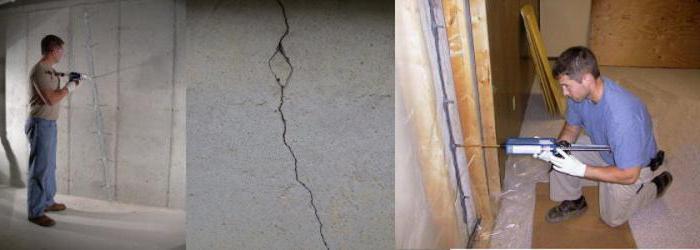
Sometimes separate large cracks appear in the plaster. Such defects usually occur in the area of windows and doors. Most often, their appearance is caused by movements in the house. To eliminate such defects, they must first of all be expanded. To do this, you can use a chisel or any other tool suitable for such work. Next, the crack should be thoroughly cleaned of dust and dirt. The easiest way to do this is with a regular household vacuum cleaner.
After the crack has been cleared, its inner surface must be wetted with water using a spray bottle. The cement mortar is prepared in a 1: 3 ratio. You can also buy a special dry mix from the store. Fill the crack with mortar in excess. In the end, he must close it completely and even protrude slightly beyond the limits. In a still fresh solution, you need to press (along the entire length of the crack) a reinforcing mesh tape. After a few minutes, a little more mortar should be applied to the wall. Ultimately, the tape should be completely covered with the mixture. After the solution has dried, the repaired area should be treated with a special float.

